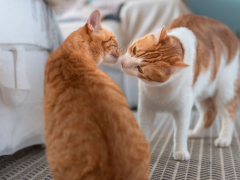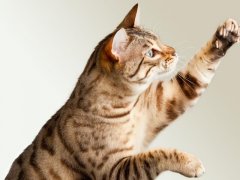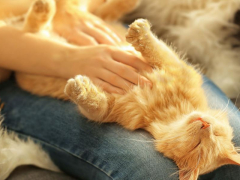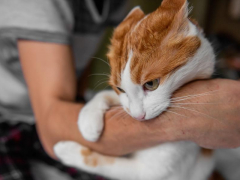
@orangeboysofweho & @kotgacekeveryday/ Instagram.com
The bond between felines and their devoted owners is a strong one. Despite their aloof reputations, cats can be very loyal, affectionate, and loving. However, cat communication is very different from humans – they can’t tell us they love us, after all. So how can you tell if your cat trusts you? What are a kitty’s top signs of affection?
We’ve put together the top ten signs of cat behavior that show your cat trusts their human companions. Read on to find out more!
1. The Greeting
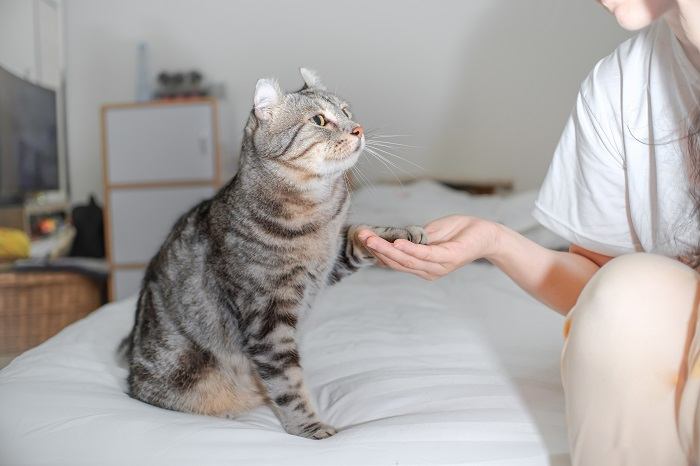
If your cat comes running to greet you when you come home, it’s a good sign that your cat trusts you.
Cats are curious creatures and love to investigate when something new happens. Adult cats are also territorial and make a habit of keeping a close eye on what happens in their territory.
A nervous cat may watch from afar, but if your cat comes running to greet you when you come home, this is a good sign that your kitty trusts their human companions. A tall upright tail as they approach you is also a compliment as this usually indicates excitement and pleasure.
Also Read: The 13 Most Affectionate Cat Breeds That Love to Cuddle
2. They Choose To Spend Time With You
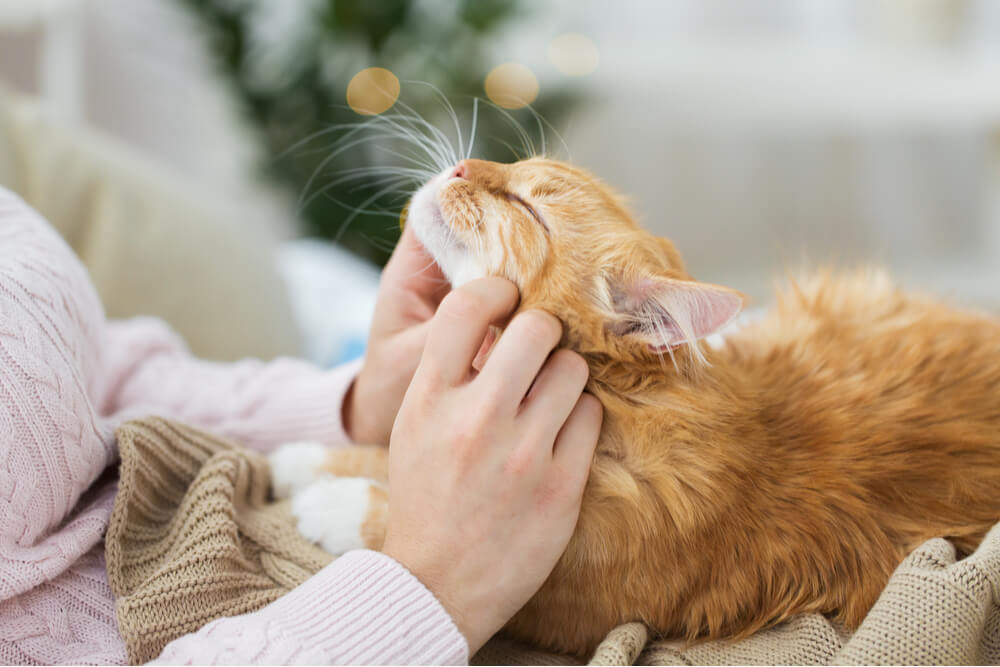
It’s a big sign of trust if your cat wants to sleep with you because this is a time when cats are very vulnerable.
Cats have a reputation as being independent and aloof, and, indeed, they are often solitary animals. However, cats can still form a strong social bond with their owners, and there are certain behaviors that demonstrate this well. A cat who wants to spend time with you is showing you that they appreciate you and trust you.
Perhaps they like to curl up in your lap in the evening, or they may enjoy a morning pat. Some cats will bring you a toy and ask for playtime. The ultimate compliment is if they want to sleep on you – being close to you when they are at their most vulnerable is a definite sign that you have earnt your cat’s trust.
3. The Love Blink
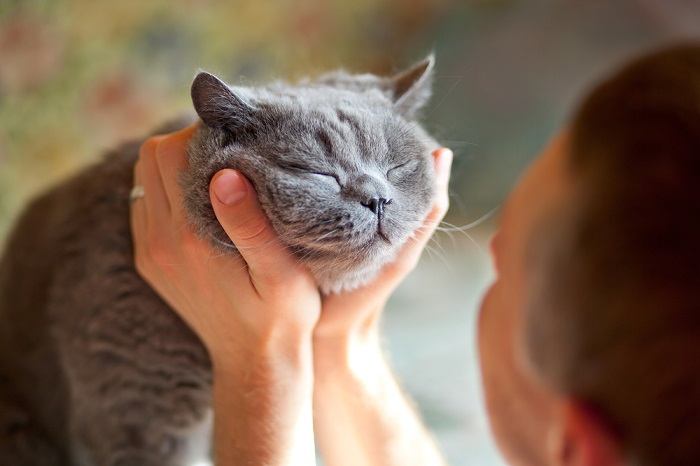
Cats use slow blinking to demonstrate affection and trust.
Eye contact is an important form of communication for cats, and they can use stares, pupil size, and blinking to signal various emotions to other cats – and humans if you know what to look for.
If your cat holds eye contact with you when relaxed, and gives a slow blink every now and again, this is a definite sign of affection and trust. Known as the ‘love blink’, this sleepy sign is very subtle but once you know, you know!
4. Kneading And Biting
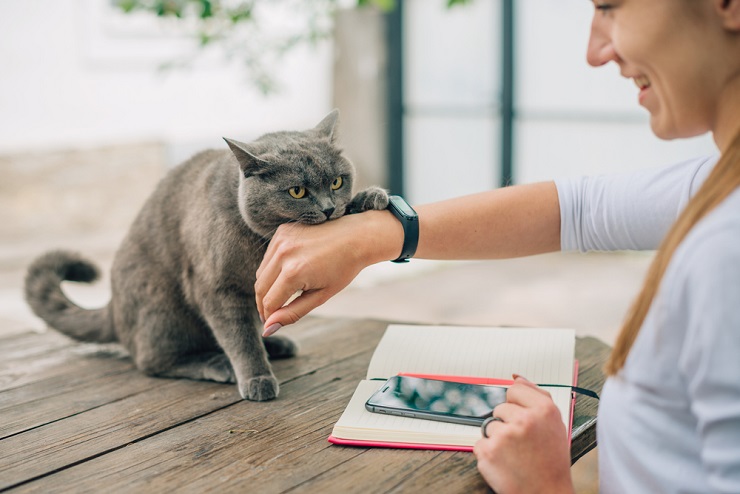
Kneading and love bites are two ways cats show their love.
They say love hurts, and occasionally our friendly felines can be a little overenthusiastic with their affection!
Bonded cats will often playfight and bite at each other, although from a very young age kittens are taught ‘bite inhibition’, whereby they learn the acceptable strength of love bites rather than a hunting bite. If your cat likes to give you a kitty kiss, you can teach them to be gentle by reacting loudly if they bite too hard so that they learn to reduce the pressure of those sharp teeth!
Cats’ sharp little claws can also be used in affection. During kittenhood, cats use their front paws to knead at their mothers to stimulate milk flow, and many adult cats still knead at soft things as a form of comfort. Sitting on your lap and kneading you with their claws is actually a sign of love – although it may not feel like it!
5. Headbutting
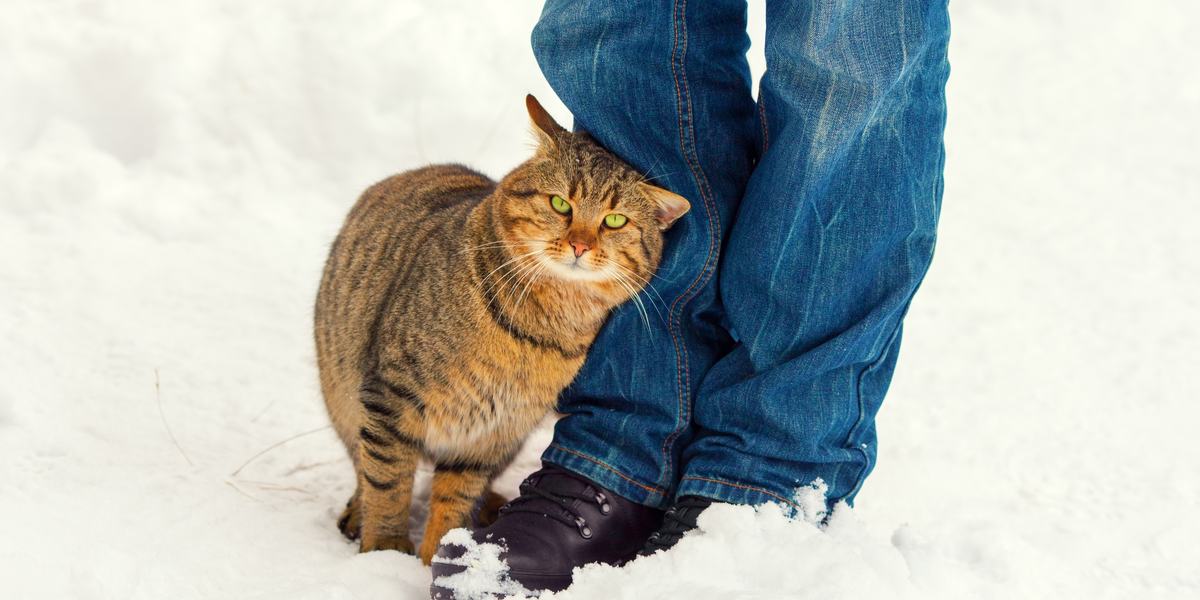
Head butting and facial rubbing deposits pheromones to the things—and people—cats consider important.
Does your cat love to give you a gentle headbutt? Or perhaps they love cheek rubs? Cats have scent glands on their cheeks, forehead, and chins that release pheromones – chemical messages that signal different things to your cat.
The facial pheromones are the ones that express safety and familiarity. If your cat is constantly giving you head butts, they are indicating that they trust you – you are their comfort and safety.
6. Grooming
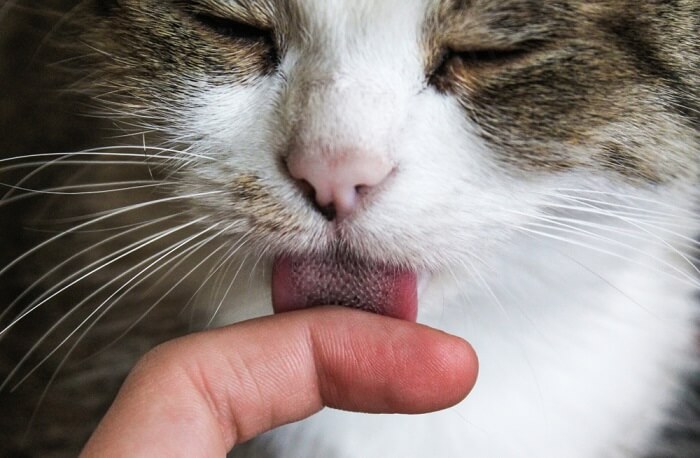
Social grooming, also called allogrooming, is a sign of social bonding and is associated with security.
Cats are often solitary animals, but if they live in a bonded pair or group, they will spend time grooming each other. If your cat licks you or grooms you, this is cat behavior indicating trust and love. Reciprocate by engaging in regular brushing sessions and your cat’s affection for you will only grow.
7. Gifts
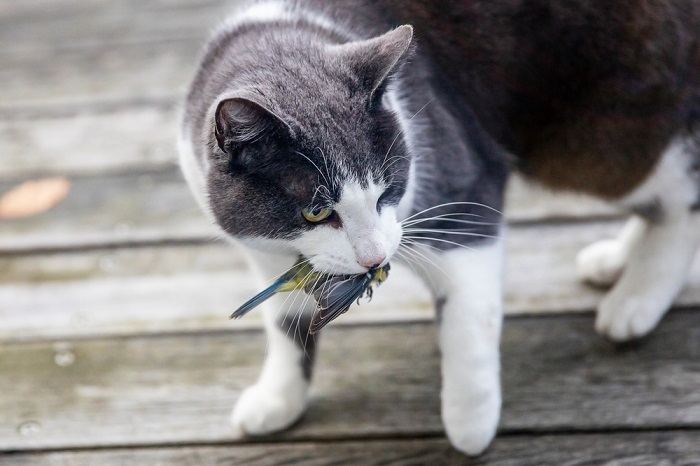
You might not want a dead bird or mouse, but a gift is a clear sign that your cat trusts you.
Cats are solitary hunters, but if they live in groups will tend to eat together. In feral cat colonies, some members of the group are hunters and bring back gifts of food to their bonded companions.
Now, finding a mouse at your feet may not be the best present you’ve ever received, but if your kitty hunts and then presents you with the reward, this is a prime example of cat behavior that should be appreciated rather than deplored. Of course, we would all rather be given some biscuits than dead mice, but a gift is a gift!
8. The Belly Rub
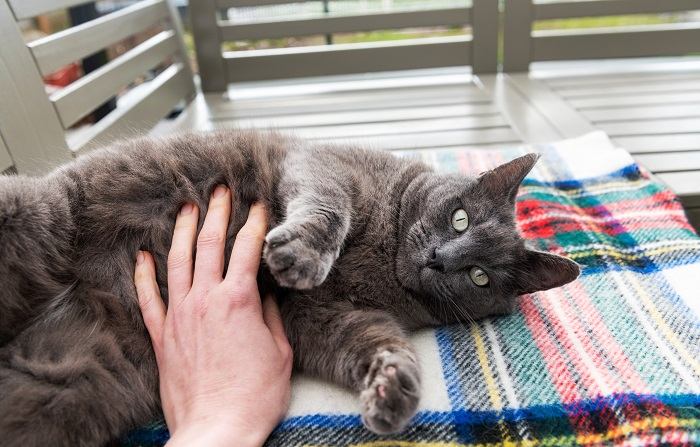
Take care to judge your cat’s mood before you go in for a stroke of that tempting soft fur!
Being presented with an upside-down cat is sometimes a bit of a conundrum – do they want their bellies scratched, or will they grab us with their claws if we try? Whether your cat purrs and lies still for a nice scratch of the tummy, or grabs your hand and bites at it, the fact remains that for many species, presenting their tummies is a sign of trust.
A cat’s stomach is a vulnerable area, and lying on their back with it exposed is a way for your cat to signal that they are perfectly relaxed and at ease around you. Just take care to judge their mood before you go in for a stroke of that tempting soft fur!
9. A Chatty Cat
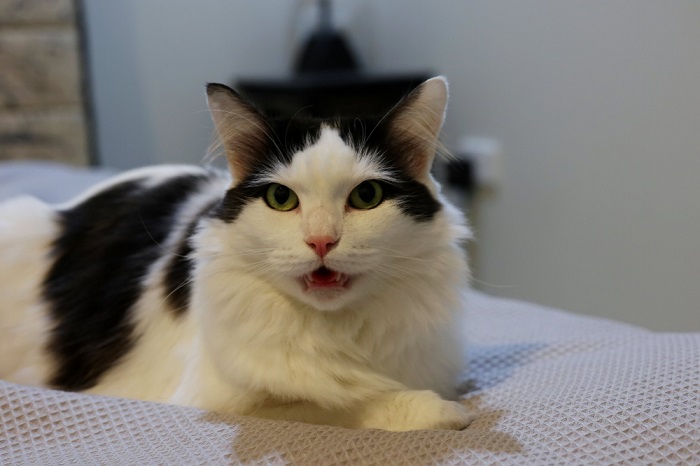
Meowing in greeting is a sign of affection and trust.
Normal cat behavior does not much rely on actual vocalizations, instead, they mostly use body language, posture, and scent to communicate. Most cat-to-cat vocalization is usually negative, consisting of hissing and growling.
The classic ‘meow’ sound from a cat is fairly rare, usually only heard when a cat is pleased or excited or between a mother cat and kitten. If your cat welcomes you with some enthusiastic noise – meowing loudly at you as you appear in the morning, for example, this should be taken as a sign of affection. Soft ‘peeping’ sounds, called a trill, is also a sign that your cat loves and accepts you.
10. Tails And Bottoms
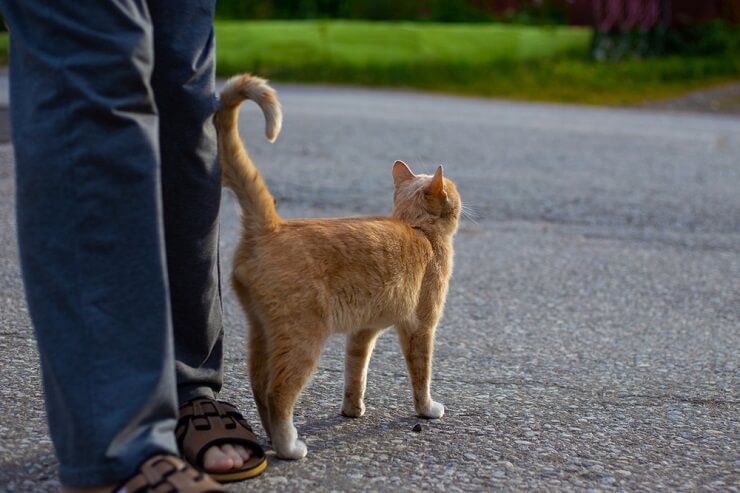
Presenting their bottom and backing it toward you is a sign your cat trusts you.
A cat’s tail plays a bigger role in feline communication than you may know. Keeping an eye on your cat’s tail position can give their mood anyway very quickly. A tall, upright tail is a sign of contentment and friendliness, and if it is quivering at you that’s even better!
Another top sign of affection in cats is when they present their bottom to you, strangely enough. Cats have scent glands around their back end, and backing their bottom towards you is a signal that they trust you and want to share scent with you.
Summing Up
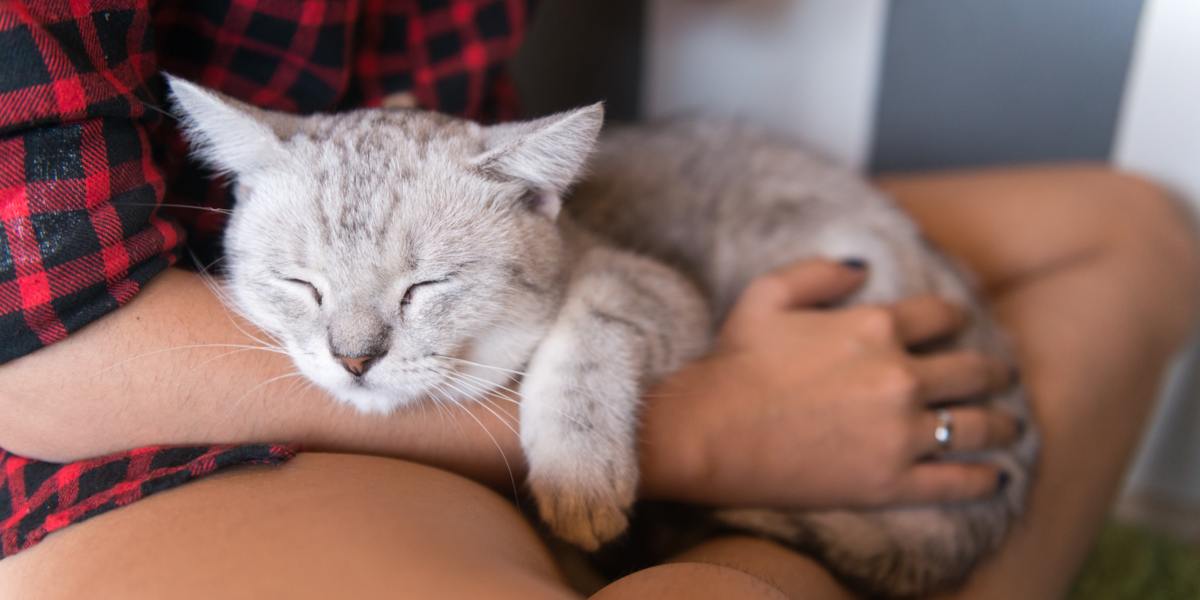
Cats have many subtle ways to show they love and trust us.
So, there you have it, an easy guide to cat behaviors showing love and trust. Pet cats have varying personalities and will display their love in different ways – how does your cat show their love? Do they display any of our top ten traits for trust?
Also Read: Why Do Cats Love Paper As Much As They Do?
